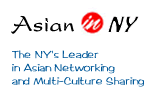Some of the same late twentieth-century geopolitical developments that lessened tensions with China also brought Mongolia farther into the mainstream of world affairs. Mongolia participated more actively in international organizations and improved relations with a growing number of Western countries, including the United States, which established diplomatic relations with Mongolia in 1987.
Traditional Mongolian society was affected heavily by foreign influences: commerce was controlled by Chinese merchants and the state religion – Tibetan Buddhism or Lamaism – was simultaneously bureaucratic and otherworldly. Modern society has been shaped by the continued foreign–primarily Soviet– influence. But despite increasing urbanization and industrialization, nearly half of the population lives either by the traditional methods of pastoral nomadism–moving their herds (sheep, horses, cattle, goats, and yaks) from one area of temporary sustenance to another–or in a close symbiotic relationship with the nomads. Despite its hardships, the nomadic life provides Mongols with national values and a sense of historical identity and pride.
However, traditional values and practices have made modernization of society a difficult task. Once they had eliminated the “feudal” aspects of society, Mongolia’s communist leaders still had to take radical steps to modernize their country. Scientific methods were applied to animal husbandry and agriculture and new industries, such as copper and coal mining, were developed. Herding and agricultural collectives, mines and factories, and educational institutions became the focal point of a social organization controlled by state administrators, most of whom were members of the ruling Mongolian People’s Revolutionary Party. Modernization inevitably brought greater differentiation and mobility in Mongolian society as party functionaries, white collar administrators, factory workers, and increasing numbers of urban residents (who typically have larger family units than those in the countryside) surpassed in numbers and opportunities the once self-sufficient pastoralists, who remain at the bottom of the social system.
The development of the economy has been closely associated with social modernization in Mongolia. Beginning with the 1921 revolution, the government took increasing control over the economy. Mongolia has a planned economy based on state and cooperative ownership. Annual planning began in 1941, and five- year plans began in 1948. The plans have been closely integrated with the five-year plans of the Soviet Union since 1961 and with Comecon multilateral plans since 1976. In the years since 1921, Mongolia has been transformed from an almost strictly agrarian economy to a diversified agricultural-industrial economy. Economic reforms in the Soviet Union inspired similar efforts in Mongolia under Jambyn Batmonh, premier between 1974 and 1984 and general secretary of the Mongolian People’s Revolutionary Party since 1984. The acceleration of economic development, greater application of science and technology to production, improved management and planning, greater independence for economic enterprises, and more balance among individual, collective, and societal interests were the target areas of reform in the late 1980s.
Underpinning society and the economy are the government and party. Mongolia has a highly centralized government run by a cabinet (the Council of Ministers), with a unicameral legislature (People’s Great Hural), and an independent judicial branch overseeing the courts and criminal justice system. Provinces and provincial-level cities and counties and town centers comprise local administration. As in all communist-run states, at the pinnacle of control is one-party rule. The Mongolian People’s Revolutionary Party, with a membership of nearly 90,000, operates with quinquennial party congresses and an elected Central Committee. The party’s Political Bureau and Secretariat provide standing leadership and carry out day-to-day business. Local party administration coincides with government offices and production units at each level.





